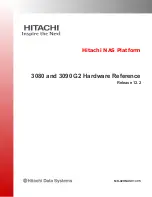
This equipment cannot be used on telephone company provided coin service. Connection to party line service is
subject to state tariffs. Contact the state public utility commission or public service commission for information.
When programming and/or making test calls to emergency numbers:
-- Remain on the line and briefly explain to the dispatcher the reason for the call.
-- Perform such activities in the off-peak hours such as early morning or late evenings.
Note:
The United States Telephone Consumer Protection Act of 1991 makes it unlawful for any person to use a computer or
other electronic device to send any message via a telephone fax machine unless such message clearly contains in a margin at
the top or bottom of each transmitted page or on the first page of the transmission, the date and time it is sent and an
identification of the business or other entity, or other individual sending the message and the telephone number of the sending
machine or such business, other entity, or individual. Refer to your fax communication software documentation for details on
how to comply with the fax-branding requirement.
If trouble is experienced with this equipment or for repair or warranty information in the U.S. and Canada, please contact your
computer manufacturer or reseller.
C
ANADIAN
N
OTICE
The Industry Canada label identifies certified equipment. This certification means that the equipment meets certain
telecommunications network protective, operation, and safety requirements. The Department does not guarantee the
equipment will operate to the users’ satisfaction.
Before installing this equipment, users should ensure that it is permissible to be connected to the facilities of the local
telecommunications company. The equipment must also be installed using an acceptable method of connection. In some
cases, the inside wiring associated with a single-line individual service may be extended by means of a certified connector
assembly. The customer should be aware that compliance with the above conditions may not prevent degradation of service
in some situations.
Repairs to certified equipment should be made by an authorized Canadian maintenance facility designated by the supplier. Any
repairs or alterations made by the user to this equipment, or equipment malfunctions, may give the telecommunications
company cause to request the user to disconnect the equipment.
Users should ensure for their own protection that the electrical ground connections of the power utility, telephone lines, and
internal metallic water pipe system, if present, are connected together. This precaution may be particularly important in rural
areas.
CAUTION:
Users should not attempt to make electrical ground connections by themselves, but should contact the appropriate
inspection authority or an electrician, as appropriate.
The Load Number (LN) assigned to each terminal device denotes the percentage of the total load to be connected to a
telephone line used by the device to prevent overloading. The termination of a line may consist of any combination of devices
subject only to the requirement that the total of the Load Numbers of all devices does not exceed 100. The Load Number for
this device appears on a label on the product.
CE N
OTICE
Marking by the symbol CE0560X indicates compliance of this equipment to the EMC Directive 89/336/EEC, the Low Voltage
Directive 73/23/EEC amended by 93/68/EEC, and the Telecom Terminal Equipment and Satellite Earth Stations Directive
98/13/EEC. Such marking is indicative that this equipment meets or exceeds the following technical standards:
■
EN 55022--Limits and Methods of Measurement of Radio Interference Characteristics of Information Technology
Equipment.
■
EN 50082-1--Electromagnetic compatibility - Generic immunity standard Part 1: Residential, commercial, and light industrial.
■
EN60950 (1992)--Safety of information technology equipment, including electrical business equipment.
■
CTR 21 (1998)--Attachment requirements for Pan-European approval for connection to the analog Public Switched
Telephone Networks (PSTNs) of TE (excluding TE supporting voice telephony services) in which network addressing, if
provided, is by means of Dual Tone Multi Frequency (DTMF) signaling.
WARNING: Although this equipment can use either loop discount (Pulse) or DTMF (Tone) signaling, only the performance of
the DTMF (Tone) signaling is subject to regulatory requirements for correct operation. It is therefore strongly recommended
that the equipment is set to use DTMF (Tone) signaling for access to public or private emergency services. DTMF signaling also
provides faster call set up.
The safety status of the ports on this modem is as follows:
■
Line Interface Port TNV
■
PCMCIA Bus connector to PC SELV
Note that only SELV ports should be connected to other SELV ports or TNV ports to other TNV ports. Interconnection of ports
with different safety status may invalidate the approval. If in doubt about making such a connection, advice should be sought
from a competent engineer.
The user should ensure that the power drawn by the modem, together with the host and any auxiliary apparatus drawing
power from the host is within the rating of the power supply.
The modem power requirement is: +5V @ ~230mA.
The user should be aware that it is the modem and not the host that is approved.
When the modem is supplied along with a host machine, the modem user instructions must also be supplied. Failure to do so
will invalidate the modem approval.
Please consult the supplier or maintainer of the modem, not the network operator, if operational difficulties are experienced.
This equipment has been approved to Council Decision 98/482/EEC--"CTR 21" for Pan-European single terminal connection to
the Public Switched Telephone Network (PSTN). However, due to differences between the individual PSTNs provided in
different countries, the approval does not, or itself, give an unconditional assurance of successful operation on every PSTN
termination point. In the event of problems, you should contact your equipment supplier in the first instance.


































